*NURSING > DISCUSSION POST > NR 603 DICUSSION BETWEEEN TRIGEMINAL NEURALGIA AND GIANT CELL ARTERITIS - DOWNLOAD FOR AN A GRADE (All)
NR 603 DICUSSION BETWEEEN TRIGEMINAL NEURALGIA AND GIANT CELL ARTERITIS - DOWNLOAD FOR AN A GRADE
Document Content and Description Below
Trigeminal Neuralgia and Giant Cell Arteritis Presentation Trigeminal neuralgia (TN) most frequently affects individuals greater than 50 years of age although it may occur in younger adults ... as well. In the United States, there is an estimated 10,000 to 15,000 new cases per year. Research indicates that there is a slightly increased incidence in the female population when compared to males. Evidence suggests that TN may be inherited due to a blood vessel malformation. In addition, hypertension and multiple sclerosis are considered to be risk factors (NORD, 2016). Patients presenting to the office with TN typically report spontaneous, intense episodic facial pain that lasts for a short period of time. The pain is specific to the mandibular, maxillary, and ophthalmic trigeminal nerve divisions. The pain is characterized as stabbing, electric shocks, burning, pressing, crushing, exploding, shooting, boring, shock-like sensations, migraine like, piercing, prickling, or a combination. These extremely painful episodes may be experienced several hundred times throughout the day but interestingly is it rare that they occur at night (Yadav et al., 2017). Giant cell arteritis (GCA) is poorly globally reported but is estimated to be prevalent in 1.23% of the population 65 years of age and older. GCA is rarely diagnosed in populations less than 50 years of age so much that age is typically included in many classification criteria (Yates, Graham, Watts, & Macgregor, 2016). Risk factors associated with GCA include cardiovascular disease, cerebrovascular disease, peripheral vascular disease, hypertension, hyperlipidemia, and diabetes (Li, Neogi, & Jick, 2017). Individuals presenting with GCA commonly report acute headache, scalp pain, jaw, tongue or limb claudication, and visual deficits. Additional subjective findings that may be less common include peripheral neuropathy, low-grade fever, flu-like symptoms, dry cough, sore throat, or stroke (González-Gay, Ortego-Jurado, Ercole, & Ortego- Centeno, 2019). Presentation findings in both TN and GCA involve an incidence of development in populations 50 years of age and older and higher rate among women when compared to men. A detail history and physical is essential when classifying TN of GCA as they both present with pain and tenderness of the scalp, jaw and temporal region, headaches, and pain that is exacerbated by movement. In contrast, TN is typically reported as unilateral facial pain whereas GCA is described as pain involving the temporal region. GCA may be associated with low-grade fever, flu-like symptoms, dry cough, sore throat, or visual deficits and/or severe complications that is not commonly reported in individuals with TN. Pathophysiology The pathophysiology of TN remains unclear but is thought to be related to chronic nerve compression of the trigeminal nerve root resulting in demyelination and progressive axonal degeneration in small unmyelinated and thinly myelinated fibers. Compression is usually caused by the superior cerebellar artery of the trigeminal nerve roots into the pons. Demyelination of the nerve fibers results in ectopic firing and amplification of sensory inputs (Gambeta, Chichirro, & Zampooni, 2020). Different from TN, GCA is related to inflammation within the vascular system rather than the demyelination. GCA involves inflammatory infiltrates of large and middle-sized arteries with the presence of multinucleated giant cells between the media and intima layers and disruption of the internal elastic lamina. This results in partial or complete obstruction of local arterial blood flow leading to ischemia (González-Gay, Ortego-Jurado, Ercole, & Ortego- Centeno, 2019). Assessment The history and physical examination are imperative when identifying and diagnosing TN and GCA, specifically the onset, location, duration, character, aggravating factors, relieving factors, timing, and severity. In both TN and GCA the age of onset 50 years or older. The location of pain associated with TN involves the cheek, upper and lower jaw, and teeth while the location of pain associated with GCA is localized to the temporal or occipital region. With TN, the pain usually lasts a few seconds, but the episodes may occur regularly for days, weeks, or months. With GCA, the duration varies and may be described as a more persistent pain. TN is described as unexpected excruciating pain that feels like an electric shock, piercing, shooting, sharp, or knife- like whereas GCA is described as a sudden headache unlike any that has been previously experienced. Aggravating factors associated with TN and GCA include increased pain with movements of the jaw. Relieving factors for TN include rest and applying warm compresses to the affected area whereas with GCA anti-inflammatory medications help alleviate the pain. In both TN and GCA, the severity is described as severe. The physical examination in individuals with TN is typically unremarkable and is most useful to identify underlying cause for pain (Krafft, 2008). Similar to TN, the physical examination is typically nonspecific and is important to rule out neoplasm, infection, connective tissue disease, or other conditions (Meskimen, Cook, & Blake, 2000). Diagnosis The diagnostic criteria for TN include: 1) paroxysmal painful episodes involving one or more branches or the trigeminal nerve lasting for one second to two minutes plus either 2) pain characterized as a) intense, sharp, superficial, or knife-like b) stimulation of pain with triggering regions or increase with triggering factors, 3) attacks which are different for each patient and patient specific, and 4) absence of clinically significant neurological deficit. The diagnostic criteria for GCA include: 1) 50 years of age or older at the time of disease onset, 2) localized new onset headache, 3) sensitivity or decreased pulse of the temporal artery, 4) ESR greater than 50 mm/h, and 5) granulomatous segmental inflammation in temporal artery biopsy. A diagnosis can be made when an individual is positive for three of the five criterions (Gemici, 2019). Laboratory testing is not useful in those with typical symptoms, but an MRI of the brain may be performed to identify multiple sclerosis, tumors, or other cause of symptoms of TN (Krafft, 2008). In contrast, an ESR is almost always elevated in those with GCA. The WBC, serum alkaline phosphatase, and aminotransferase levels may also be elevated slightly (Meskimen, Cook, & Blake, 2000). Treatment The initial recommended treatment for TN is carbamazepine as evidence has proven to be effective. If carbamazepine is unsuccessful, other options include baclofen, phenytoin, lamotrigine, gabapentin, topiramate, clonazepam, pimozide, and valproic acid. When pharmacologic management is unsuccessful, surgical intervention may be indicated. Surgery may be either percutaneous and include glycerol injection, balloon compression, radiofrequency rhizotomy, and gamma knife stereotactic radiosurgery or with an open technique which includes partial trigeminal rhizotomy and microvascular decompression (Krafft, 2000). Unlike the treatment for TN, GCA management involves high doses of corticosteroids to reduce the vascular inflammation. Corticosteroid therapy is typically required for at least two years but may be needed indefinitely (Meskimen, Cook, & Blake, 2000). The use of carbamazepine in TN is effective due to blocking the sodium channels thus preventing synaptic transmission in the trigeminal nucleus. Due to the different pathophysiology’s between TN and GCA, reducing the vascular inflammation is treatment goal for GCA and is typically achieved through use of high dose corticosteroids such as prednisone. References Gambeta, E., Chichorro, J. G., & Zamponi, G. W. (2020). Trigeminal neuralgia: An overview from pathophysiology to pharmacological treatments. Molecular pain, 16, 1744806920901890. https://doi.org/10.1177/1744806920901890 Gemici, Y. I. (2019). Temporal arteritis and trigeminal neuralgia overlap syndrome: A case report. Ağri - The Journal of The Turkish Society of Algology. doi:10.14744/agri.2019.33600 González-Gay, M. Á, Ortego-Jurado, M., Ercole, L., & Ortego-Centeno, N. (2019). Giant cell arteritis: Is the clinical spectrum of the disease changing? BMC Geriatrics, 19(1). doi:10.1186/s12877-019-1225-9 Krafft R. M. (2008). Trigeminal neuralgia. American family physician, 77(9), 1291–1296. Li, L., Neogi, T., & Jick, S. (2017). Giant cell arteritis and vascular disease—risk factors and outcomes: A cohort study using UK Clinical Practice Research Datalink. Rheumatology. doi:10.1093/rheumatology/kew482 Meskimen, S., Cook, T. D., & Blake, R. L., Jr (2000). Management of giant cell arteritis and polymyalgia rheumatica. American family physician, 61(7), 2061–2073. Trigeminal Neuralgia. (2016, May 18). Retrieved July 08, 2020, from https://rarediseases.org/rare-diseases/trigeminal-neuralgia/ Yadav, Y., Nishtha, Y., Sonjjay, P., Vijay, P., Shailendra, R., & Yatin, K. (2017). Trigeminal neuralgia. Asian Journal of Neurosurgery, 12(4), 585. doi:10.4103/ajns.ajns_67_14 Yates, M., Graham, K., Watts, R. A., & Macgregor, A. J. (2016). The prevalence of giant cell arteritis and polymyalgia rheumatica in a UK primary care population. BMC Musculoskeletal Disorders, 17(1). doi:10.1186/s12891-016-1127-3 Hello James, Well done with your post. Thank you for looking at these two similar conditions. You've done some specific comparing back and forth which is good and I really like the style in which you write- it 'sounds' like you're talking to a patient which is good. I want to press you on the treatment portion however. You allude to corticosteroids as first line for GCA and several different classes of meds for TN. Which medication should be started first and at what dosages? You also mention labs without detail and I am curious what labs would need to be done and what is the purpose of the labs? I look forward to your response. Best Regards, [Show More]
Last updated: 1 year ago
Preview 1 out of 5 pages
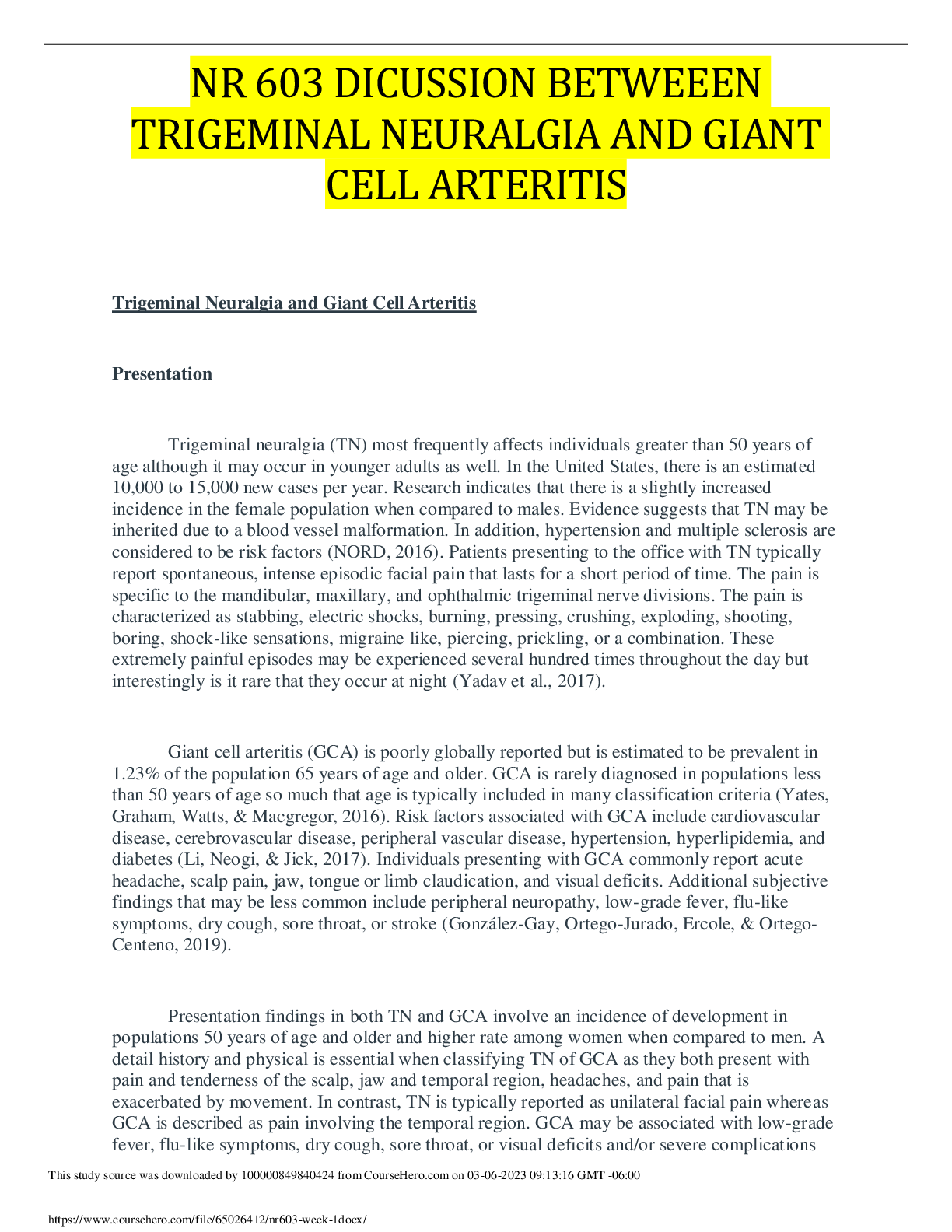
Reviews( 0 )
Document information
Connected school, study & course
About the document
Uploaded On
Mar 06, 2023
Number of pages
5
Written in
Additional information
This document has been written for:
Uploaded
Mar 06, 2023
Downloads
0
Views
59


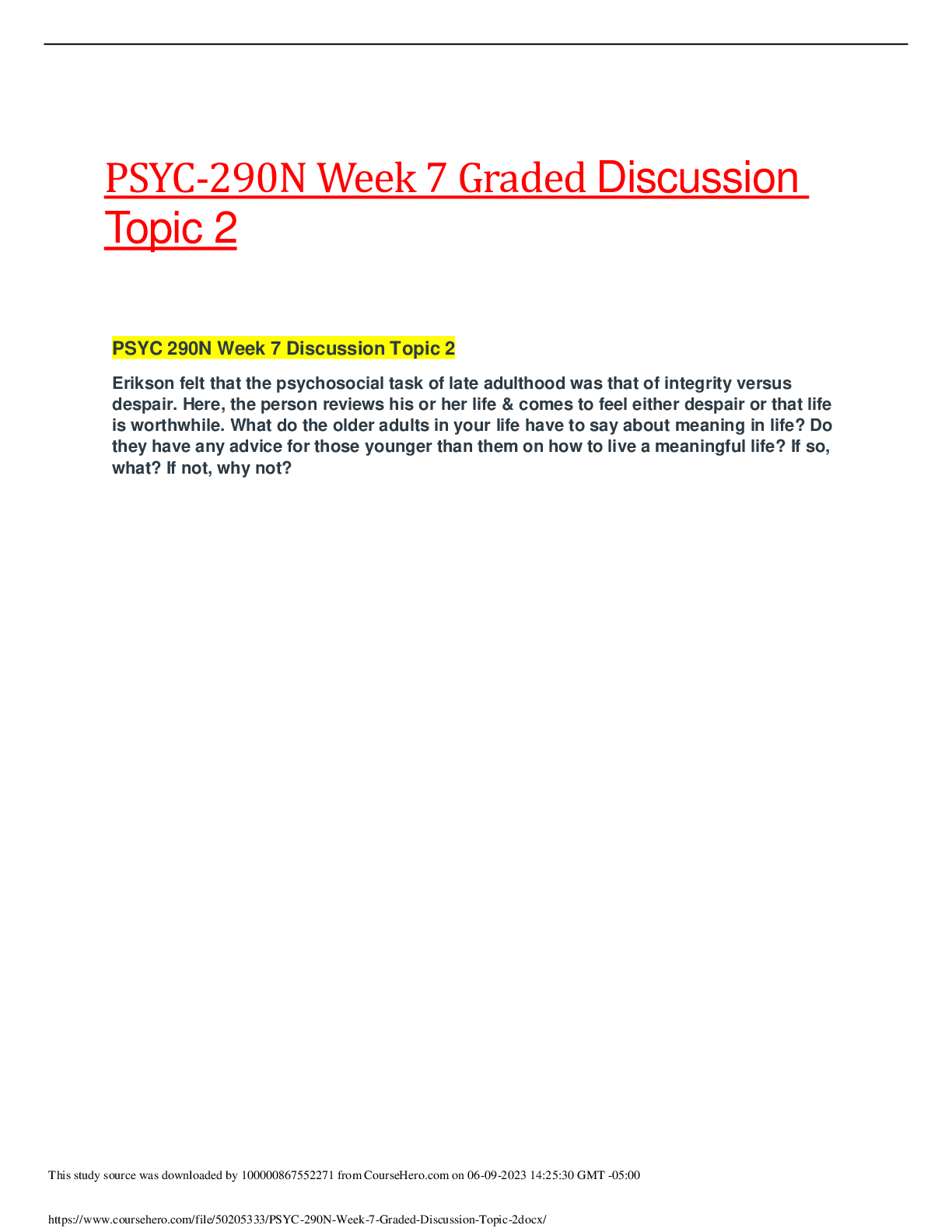
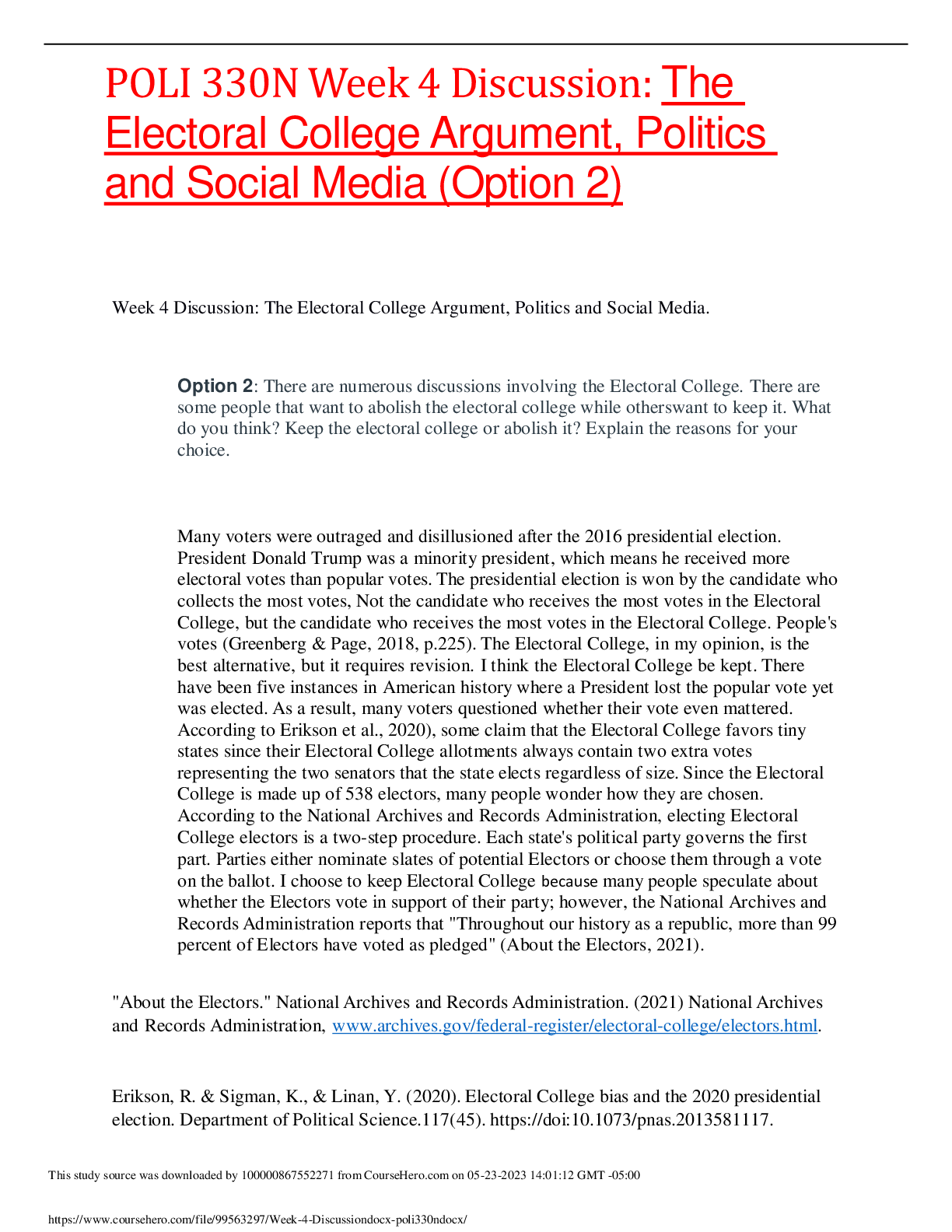

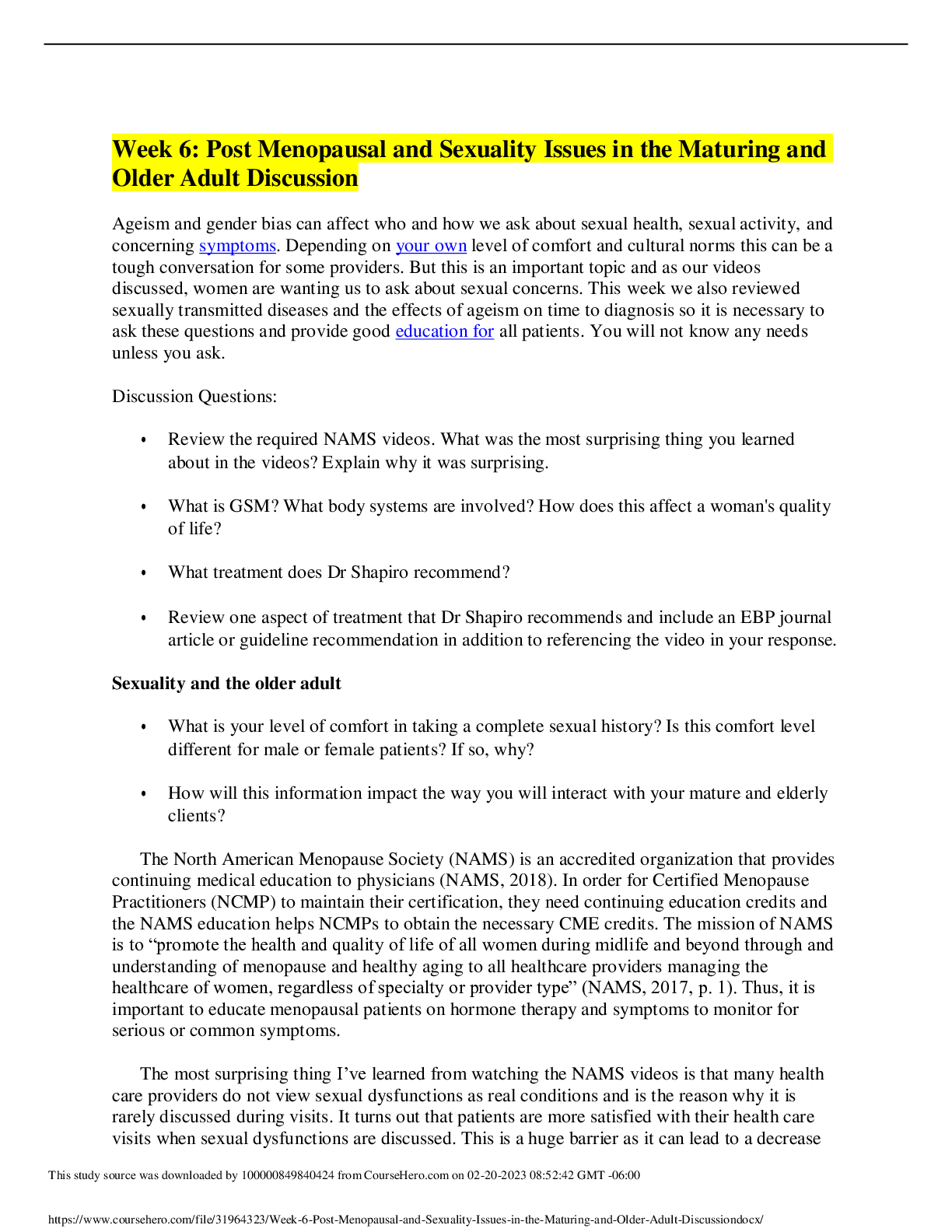
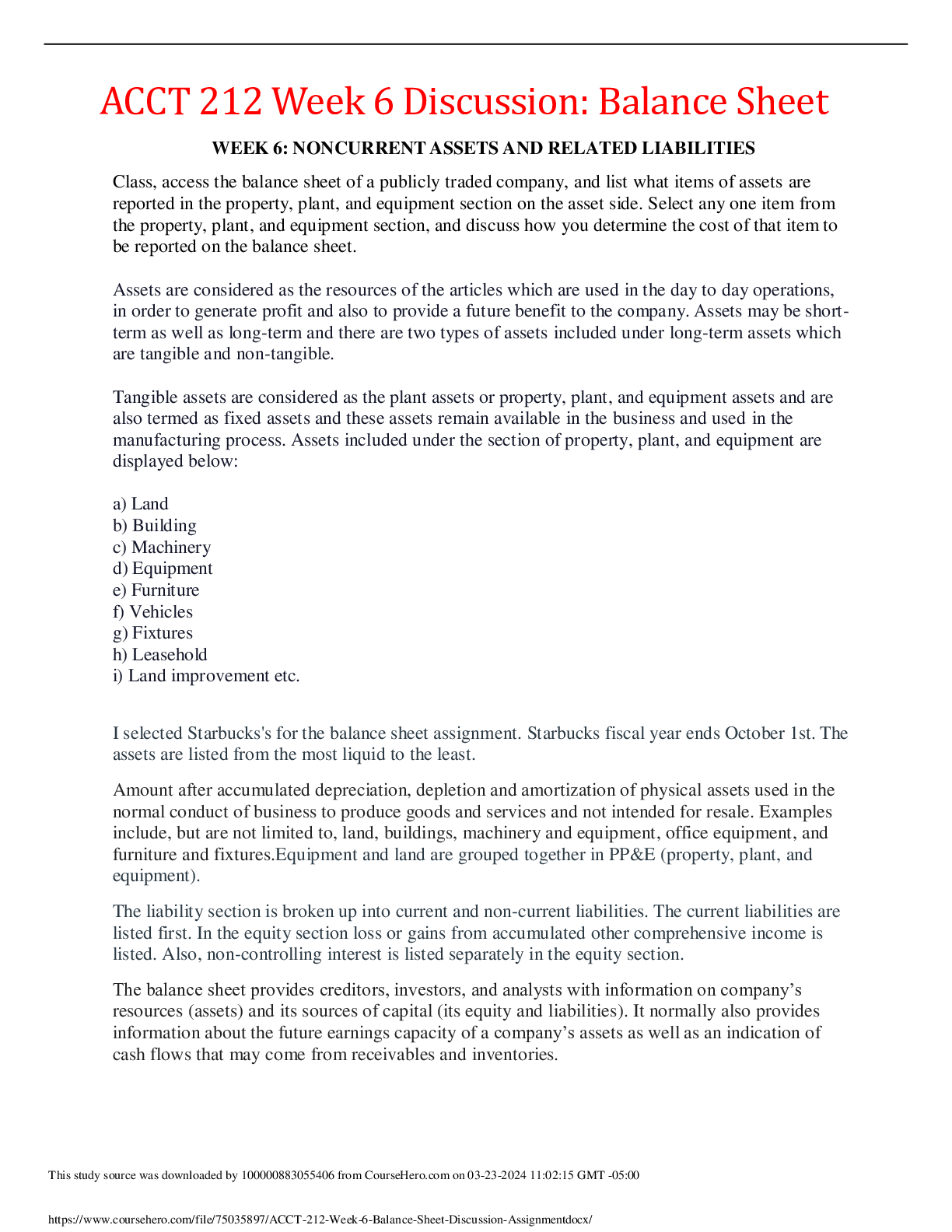
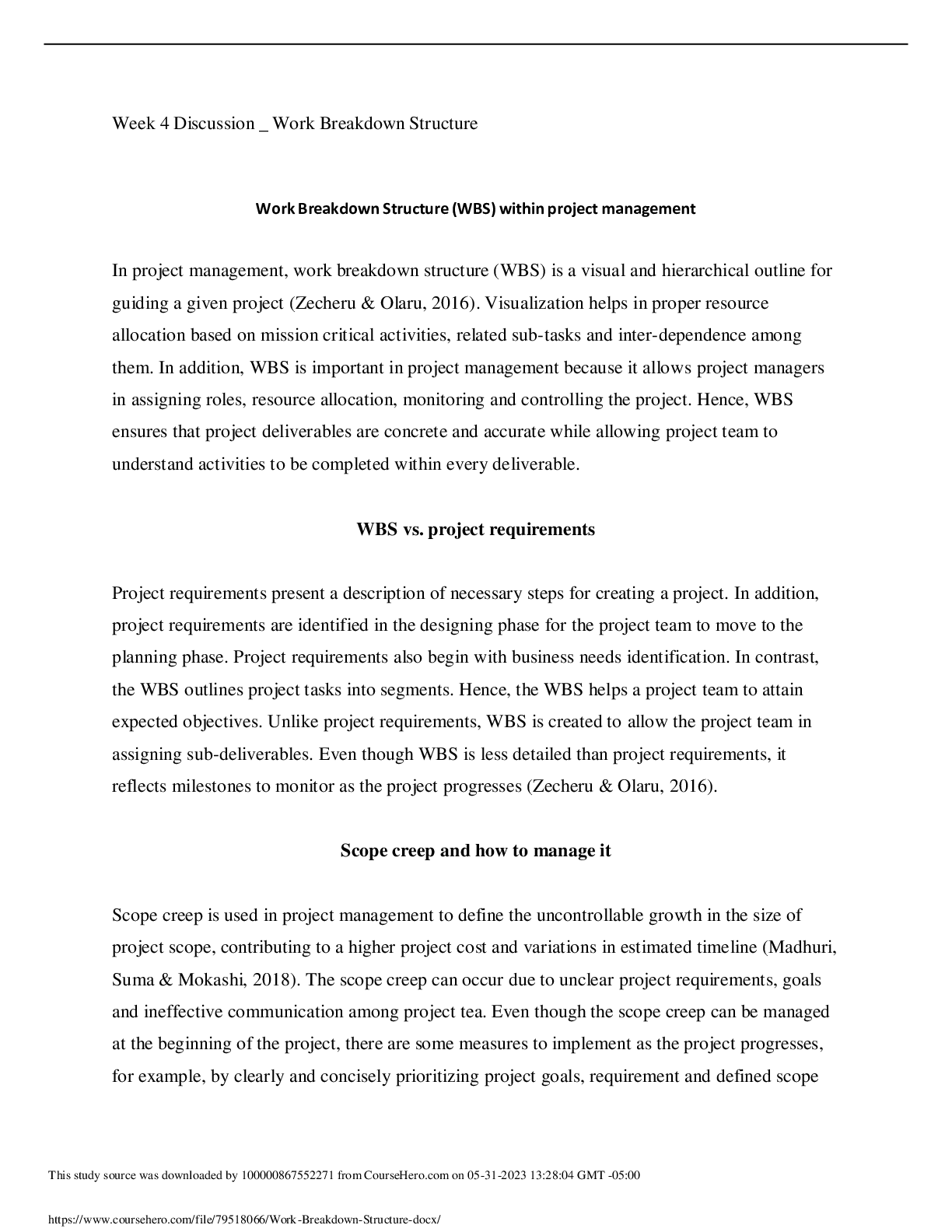





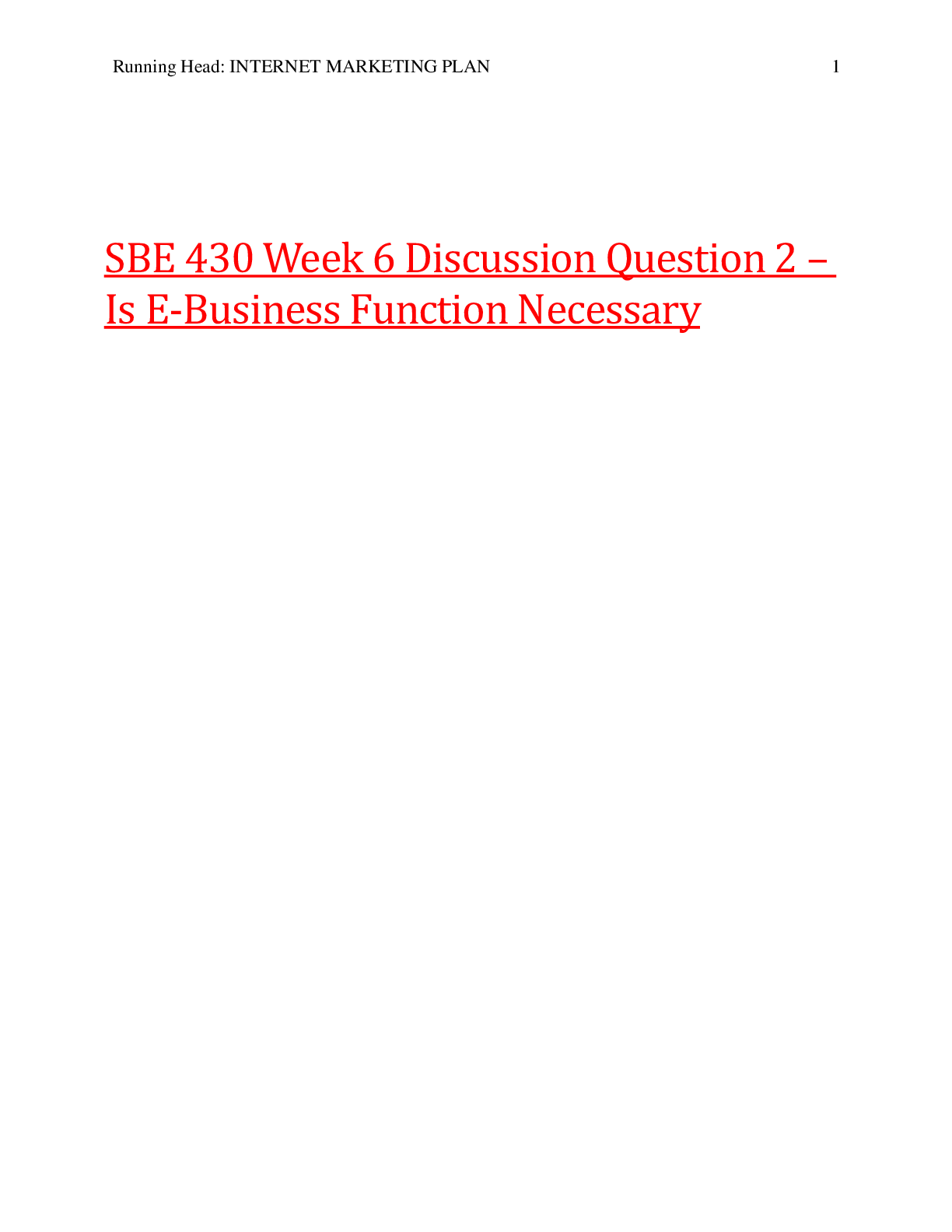
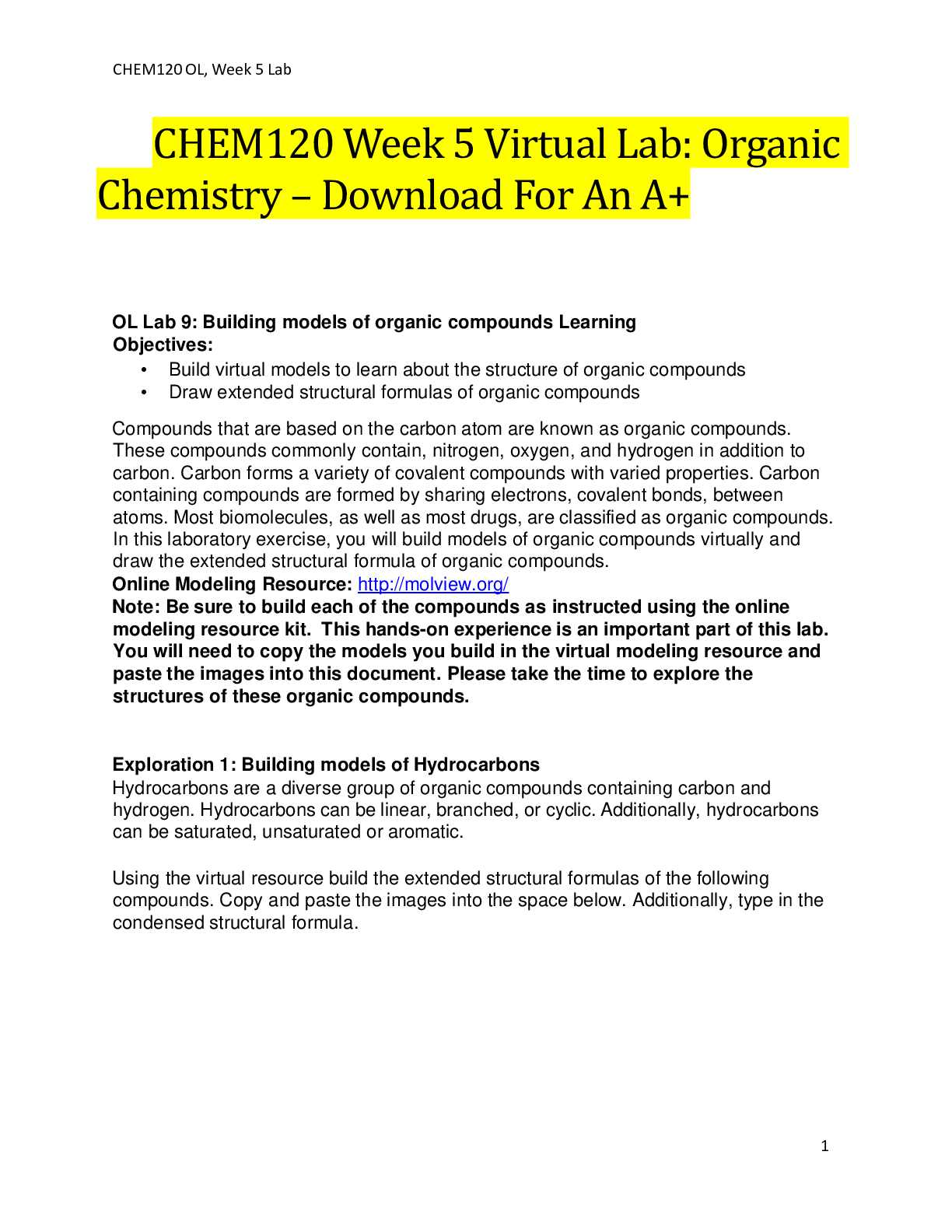
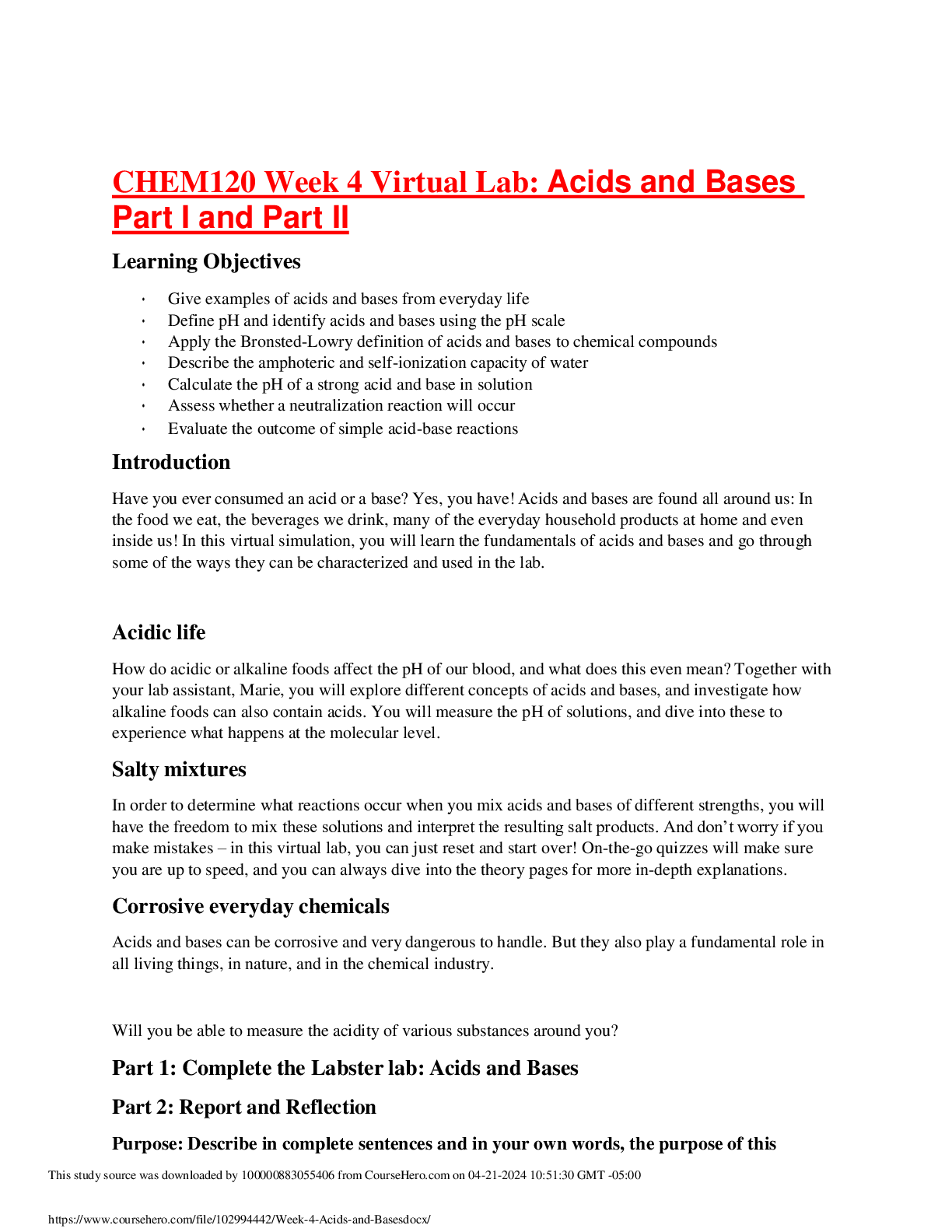
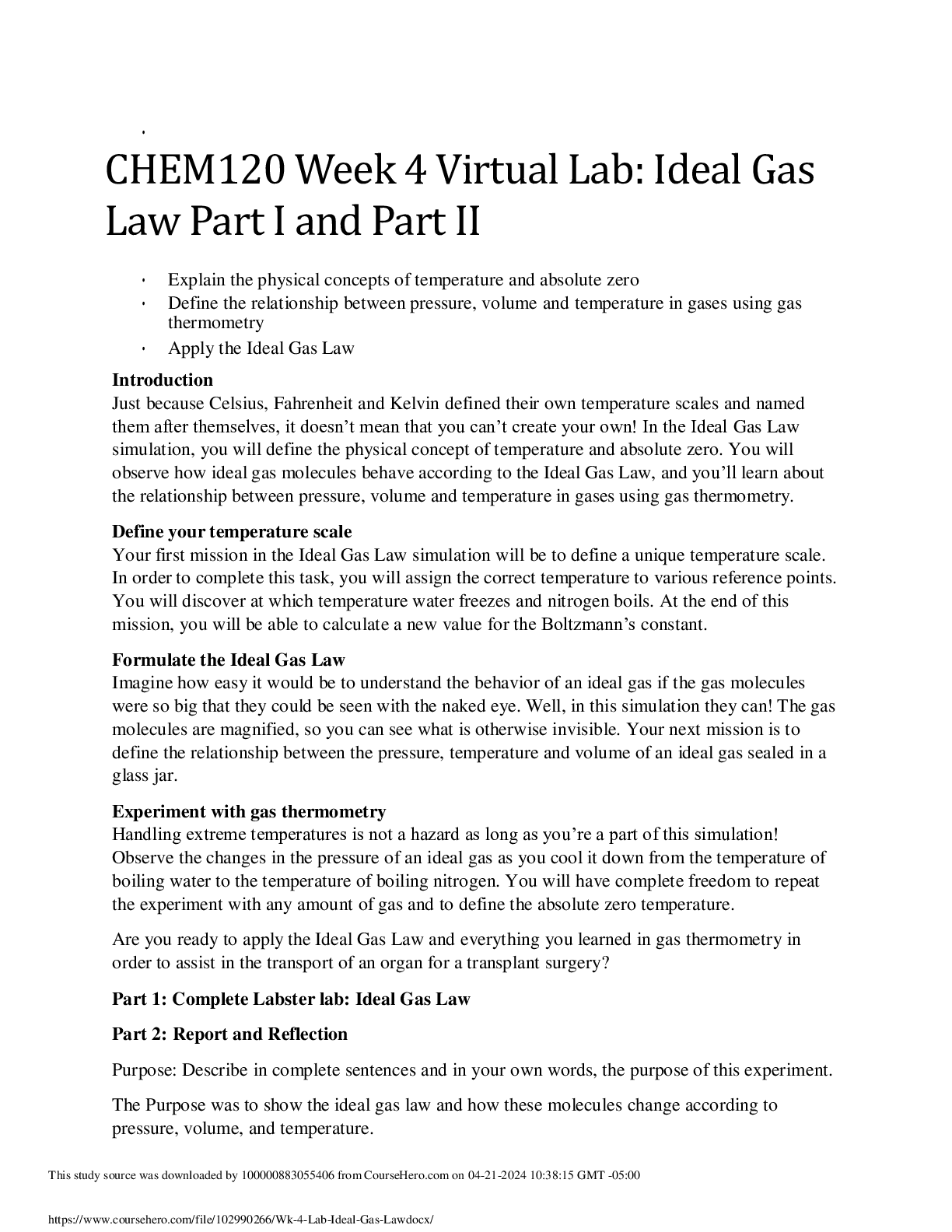
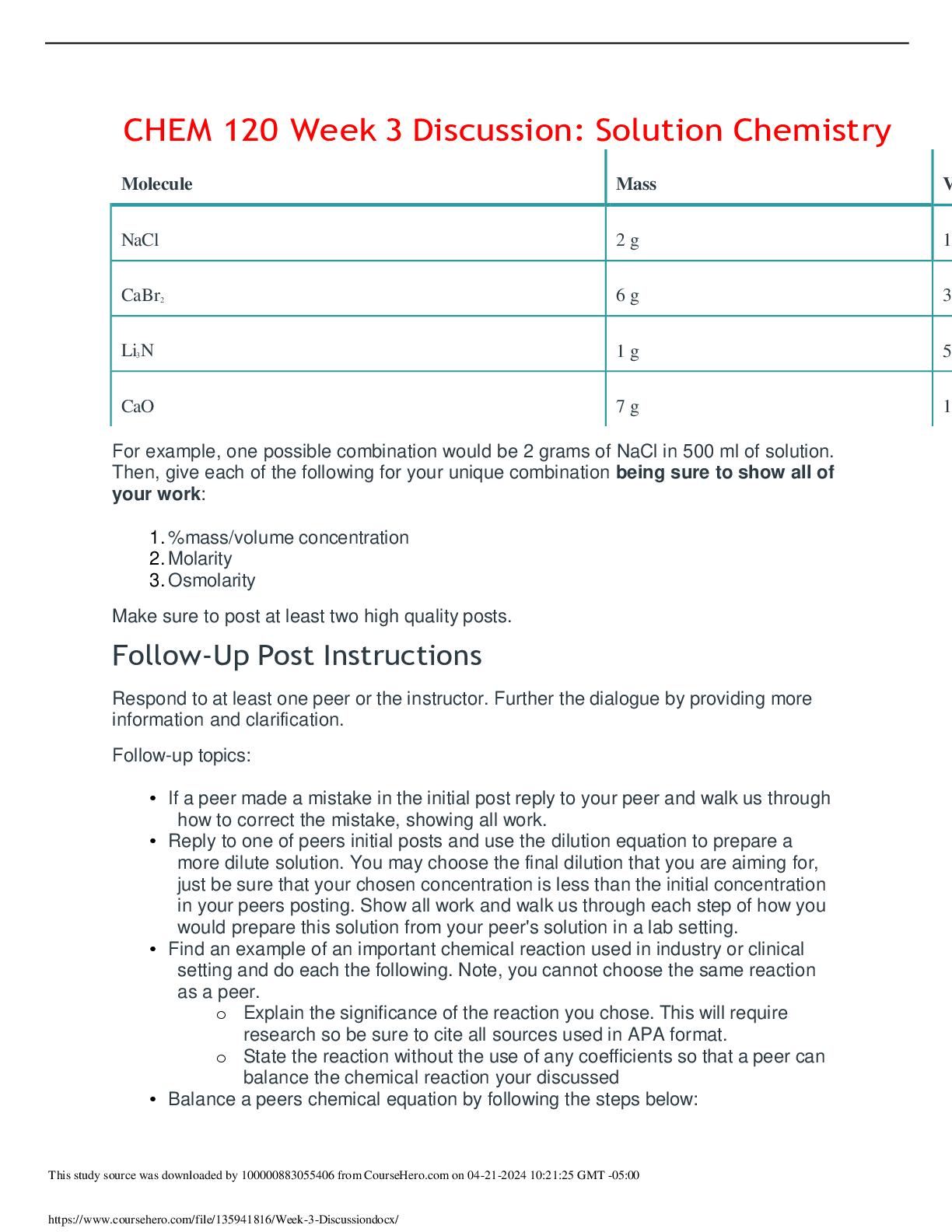
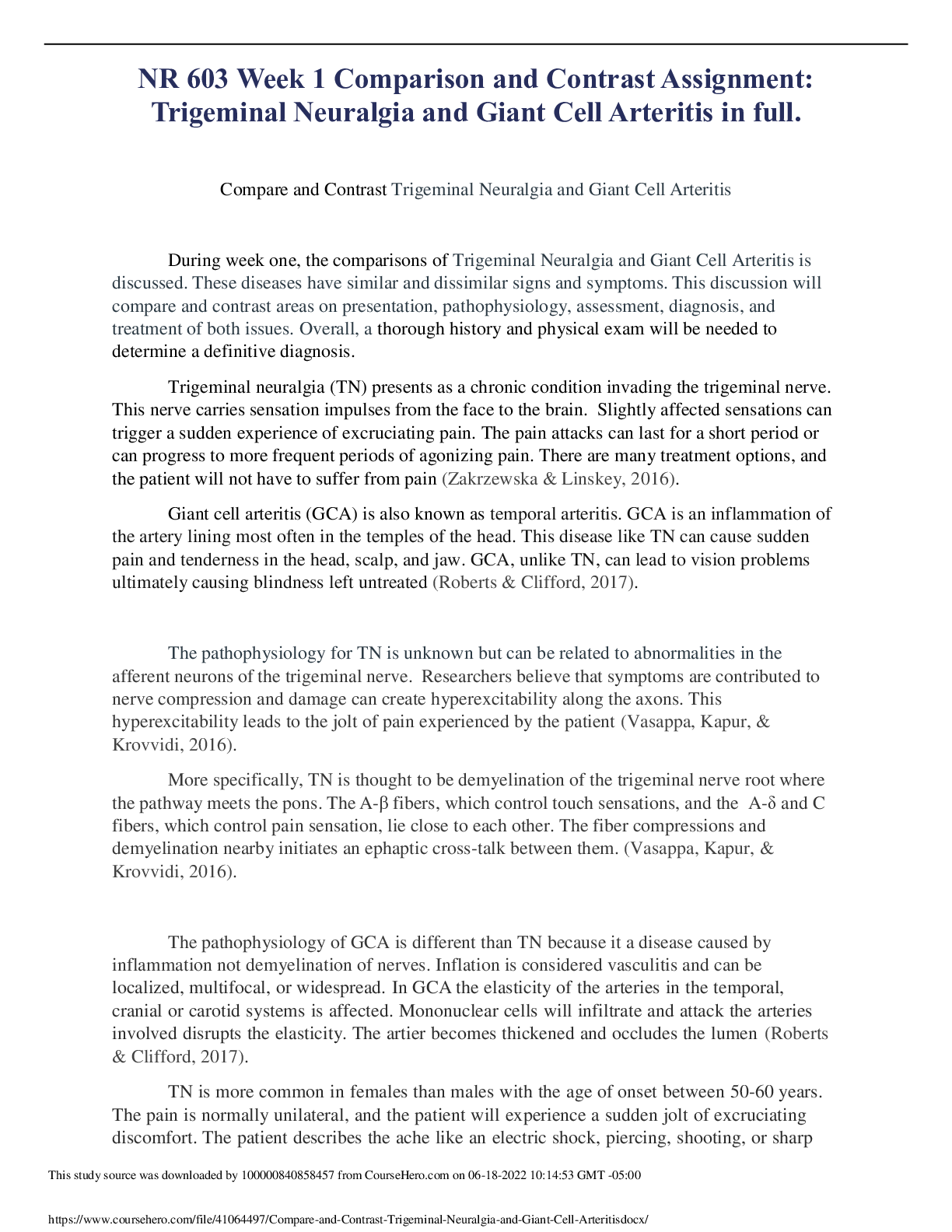
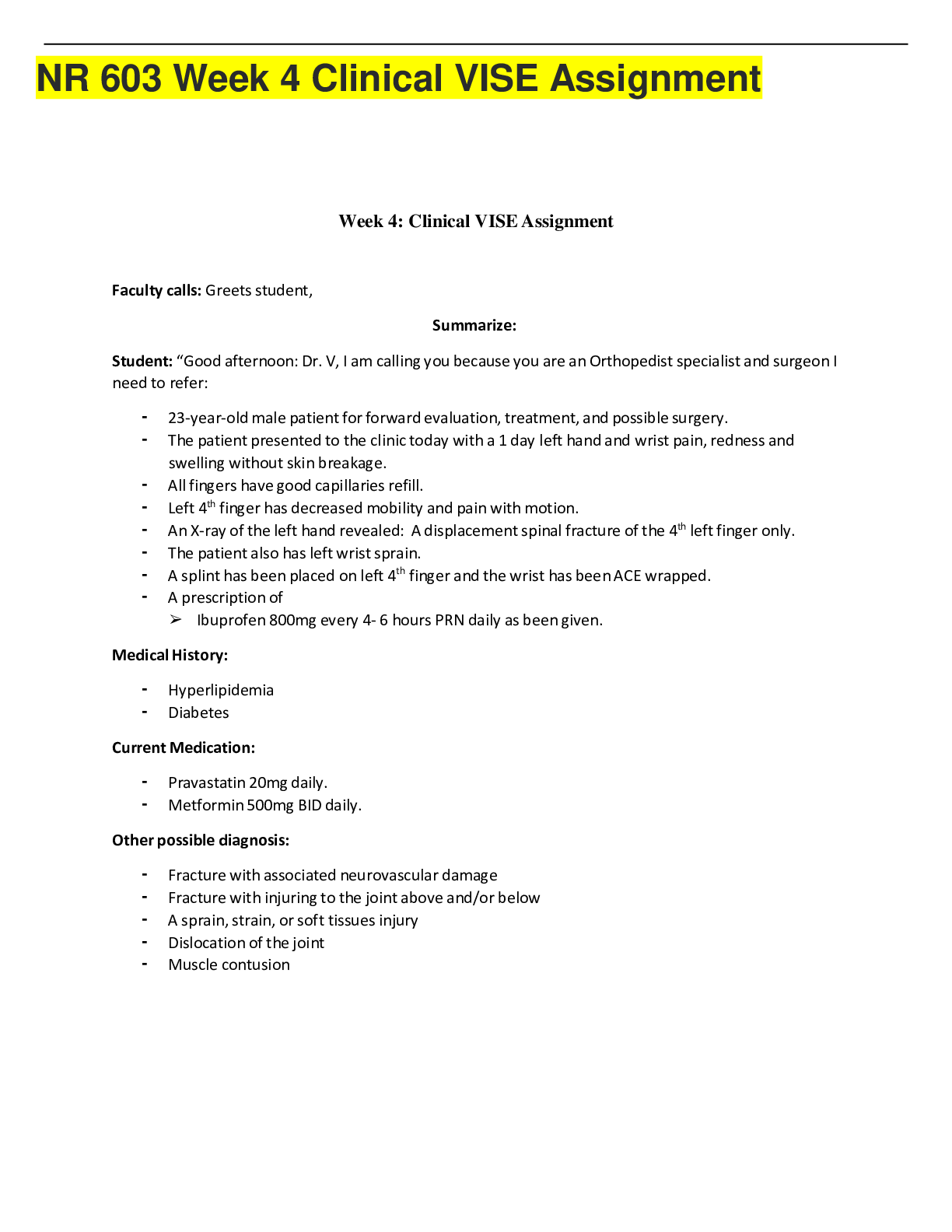
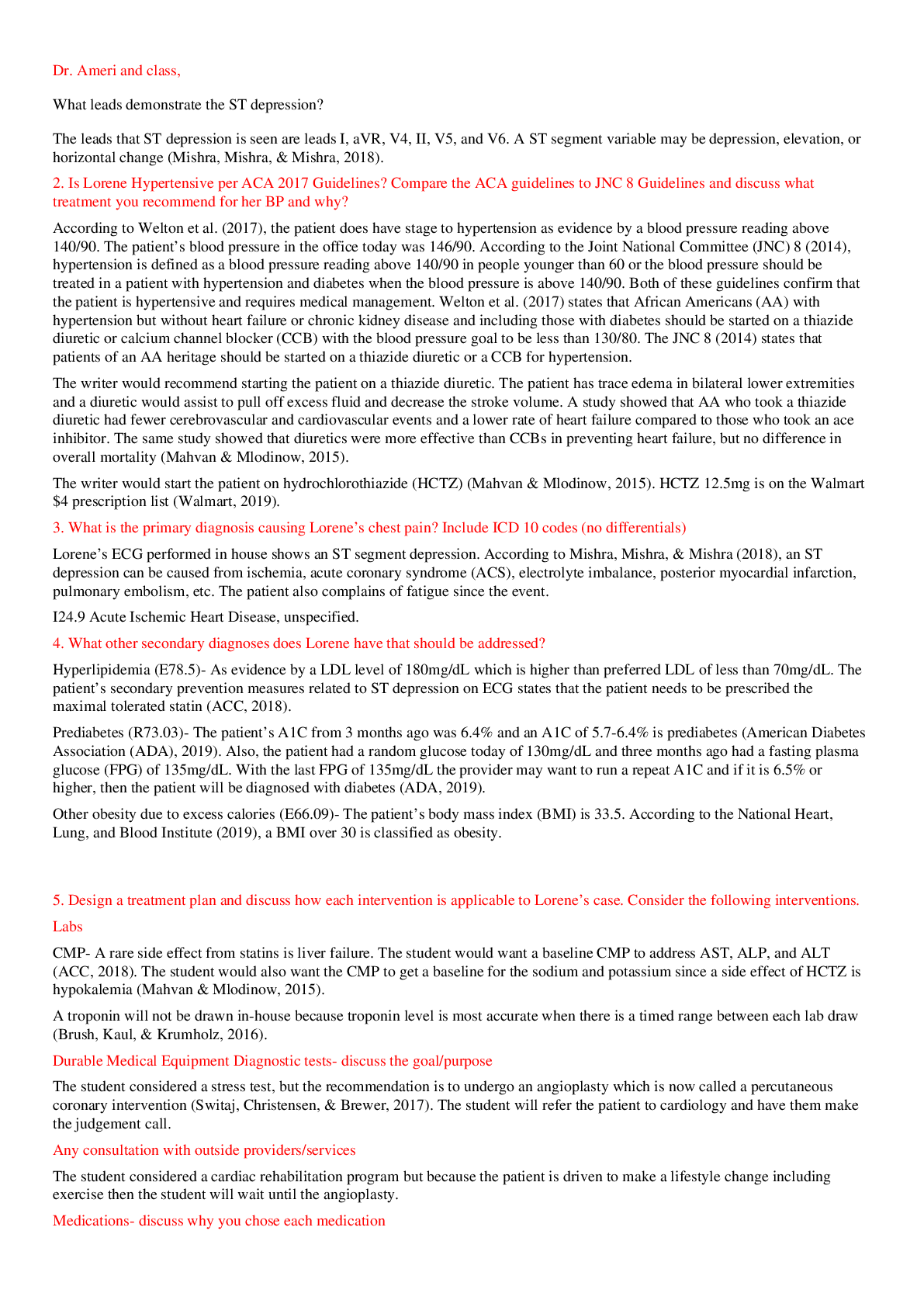
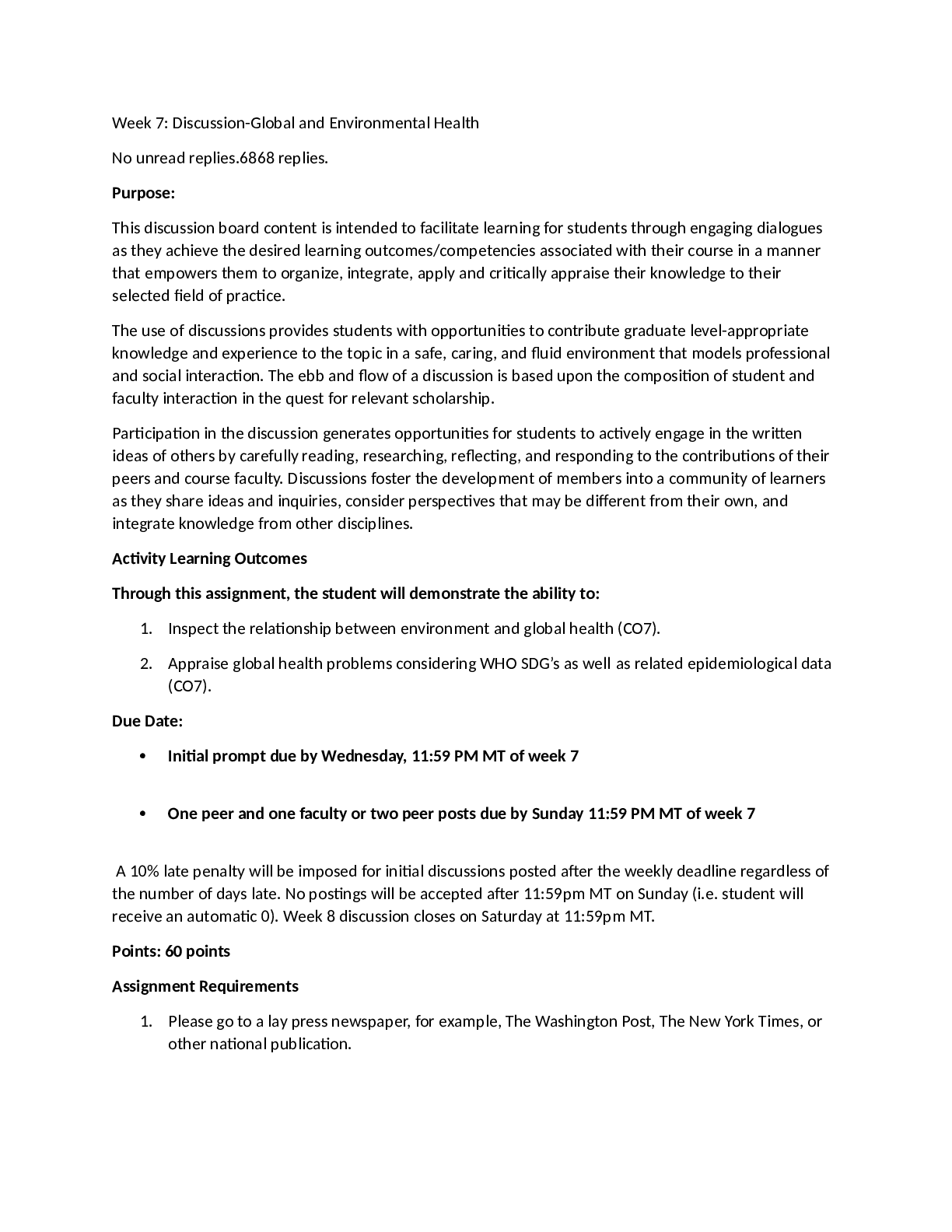
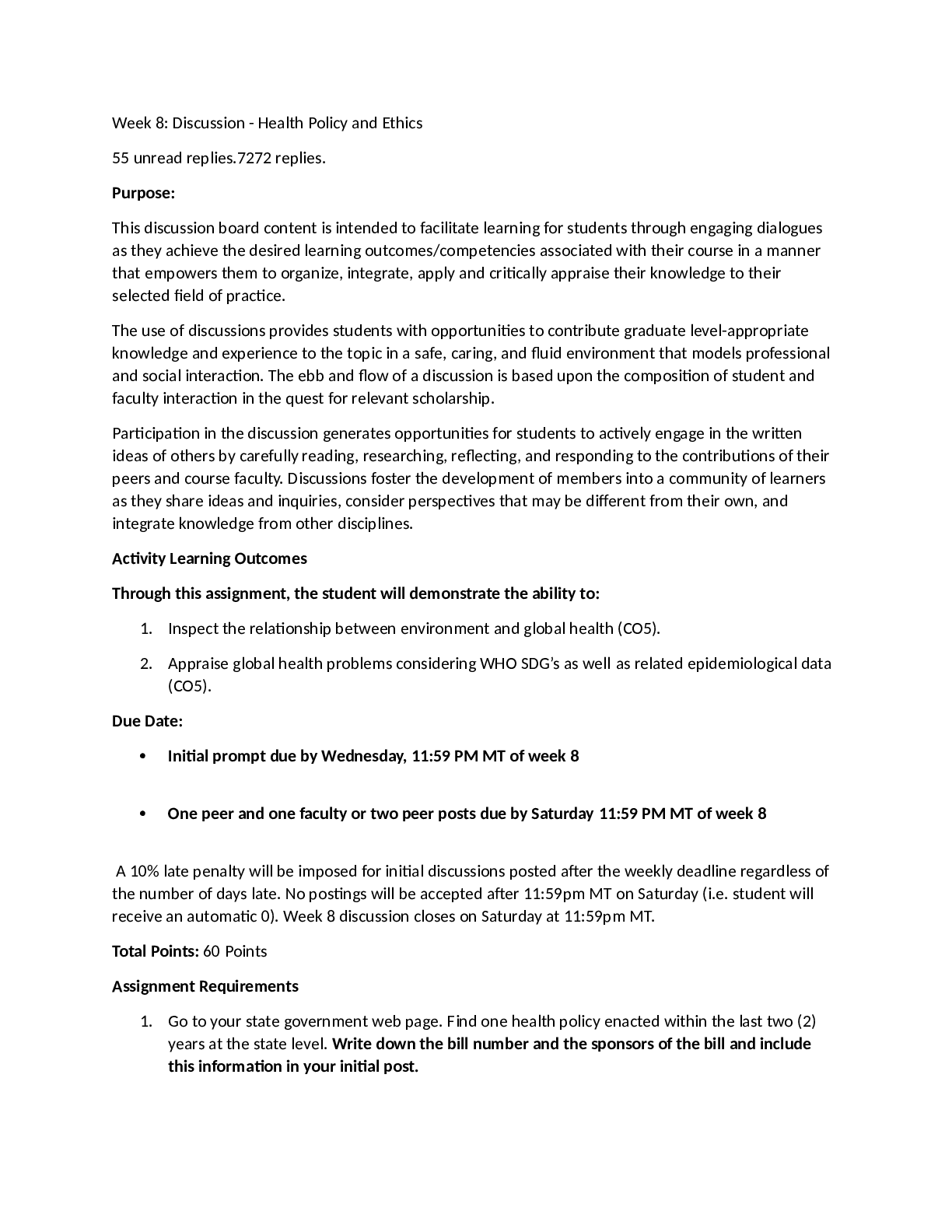
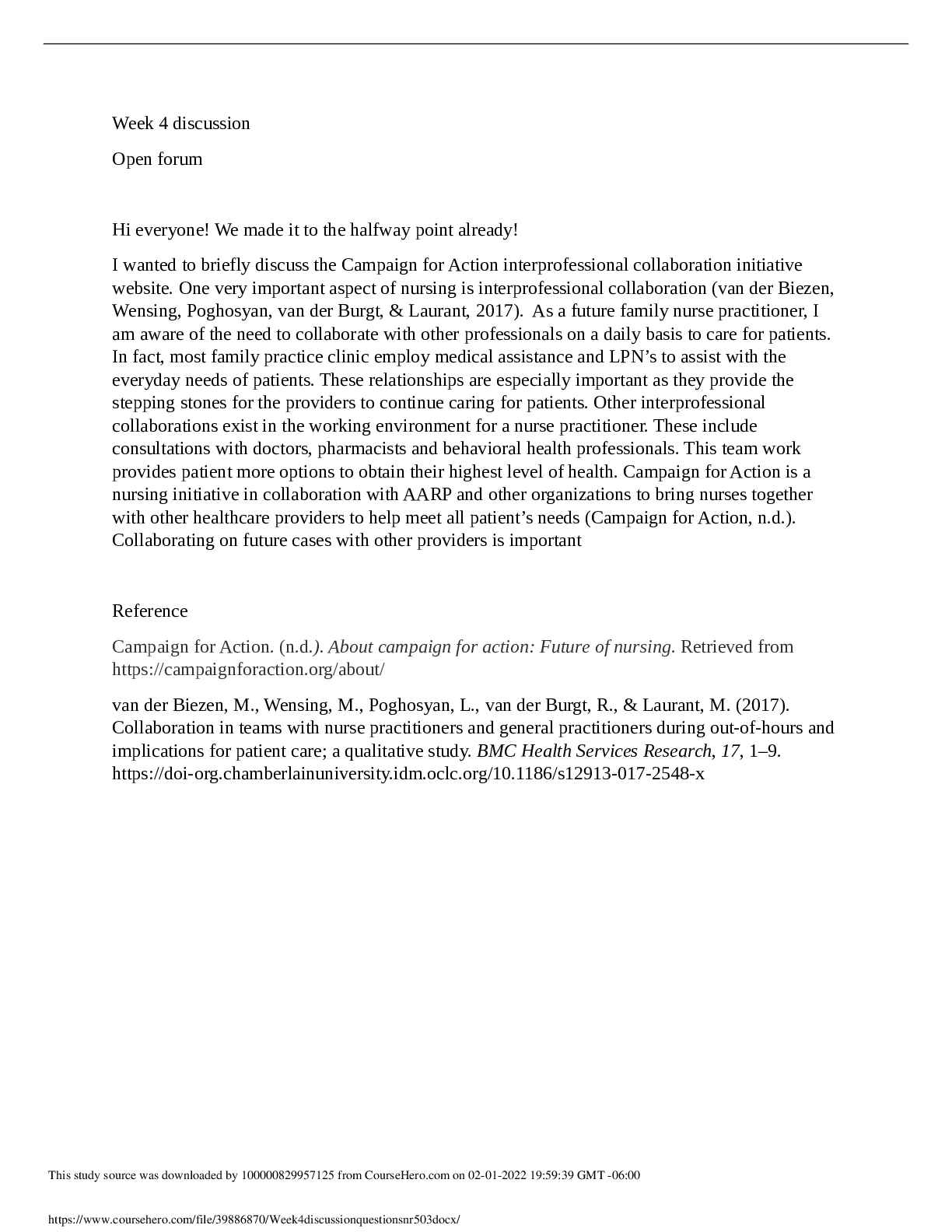




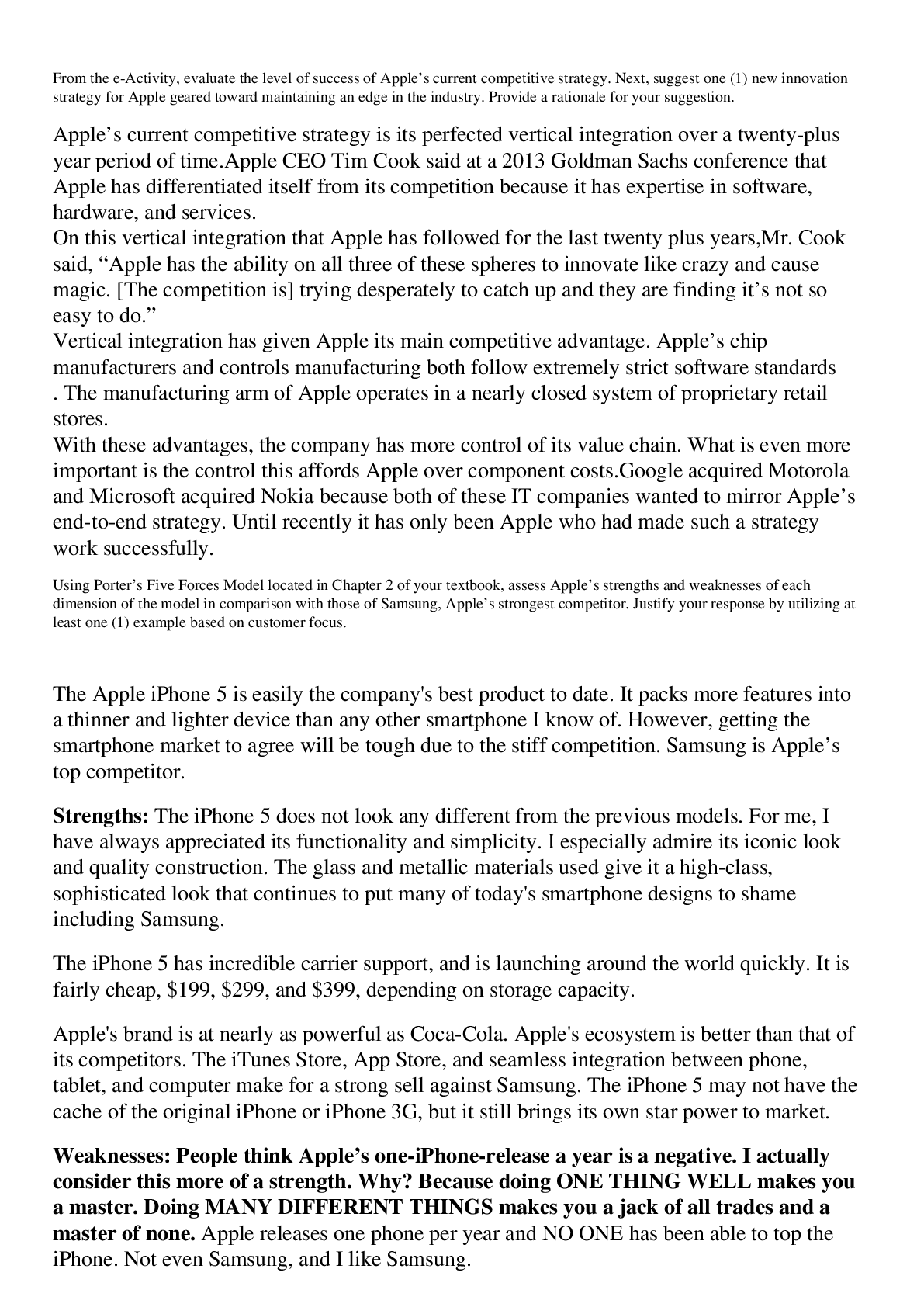
Growth and developmental patterns of toddlers.png)



